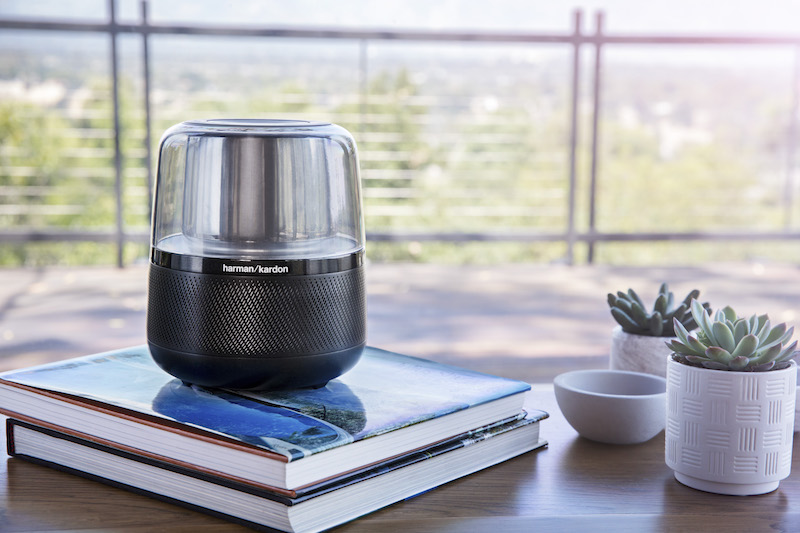Imagine using voice recognition to start the faucet in your tub at your exact desired temperature – all from the room next door. It’s undeniable that we’re entering a time where voice is everywhere. It doesn’t just tell you the weather. It turns things on, interacts with appliances, all while leveraging IoT, robotics, and AI to perfect engagement and know your preferences.
As voice becomes the preferred user interface, we’re seeing the technology integrated into really interesting applications. Think smart toilets, mirrors, faucets, showers, couches – even smart umbrellas – voice enablement is going beyond the living room and being integrated into the entire home. However, this requires constant innovation from an audio perspective, as many of these environments are extremely hostile for sound. How can you have a speaker that projects quality sound, when it’s crammed into an enclosed space like a couch? How can you have crystal clear music, when you’re fighting against the shower noise?
These pose real challenges for product developers and engineers who want to create innovative products that meet the demands of the growing smart home customer. Noise suppression, audio quality, projection, and acoustics are all challenges for these environments that are competing with background noise, echoes, and/or small spaces.
A great example is a product we helped formulate for one of our clients who wanted to put a “hidden” speaker in a couch with a surround sound system. This is a difficult task because to have great audio, you typically need ample space for the acoustics – putting a speaker inside of a dense, small space like furniture eliminates this integral aspect. Furthermore, you still need great surround sound to penetrate the entire room. With this unique application, it’s a challenge of physics. To overcome this, the following are key to keep in mind:
- Adding the right drivers at the right locations. In other words, making sure your speakers are in the right locations so that you’re hearing full, balanced sound.
- Tuning the speakers for the right cover and setting. It’s necessary to recognize and correct what space does to the sound. Size, construction and reflectivity are all key to consider when designing the product.
- An expert to tune the system to get the right surround sound. If you’re not an audio expert, don’t pretend to be one! Work with a partner who can make sure the product design incorporates all these considerations and can set up best standards for setting acoustics and sound levels.
I also mentioned we’re seeing voice enablement make its way into smart appliances such as showers, mirrors, kitchen faucets and more. Here, you have to think about noise suppression and moisture, apart from being waterproof. For example, moisture can block the microphones and results in not picking up voice command. And, there are a lot of noises inside the shower or kitchen, which a human brain can ignore, but a smart speaker cannot. To solve this issue for a client who is integrating this technology into bathrooms and kitchens, we used the following techniques and considerations:
- Use a technology that is tuned to hostile environments. Pick a technology that has noise cancellation, echo cancellation, ambient noise reduction, and beamforming. In this case, we used our Sonique algorithms to solve for these challenges which increases the accuracy of voice capture in a noisy environment.
- Boost treble without compromising the smart speaker limitations. This will help you get the best possible audio.
Finally, another area we’re seeing continue to grow is audio outside the home. Think your backyard, patio, sunroom, etc. Creating audio for applications outside also poses unique challenges such as wind, limited bass and speaker connection. For a client who was innovating a smart speaker furniture product for the backyard, we recommended the following solutions to tackle these problems:
- Again, technology is key. Here, using a technology such as far-field voice technology input provided customized voice solutions with a high-performance microphone array, along with a suite of voice algorithms that help accurately capture voice commands. This tech also allows for integration with popular natural voice engines, so developers can work with their preferred vendor.
- Consider surfaces that reflect bass waves. Most outdoor speakers are limited in bass for a simple reason – as there are no walls to reflect the bass waves and reproduce the same experience as listening room. Putting a speaker on an umbrella, for example, gives us those walls and we can reflect bass waves and improve the bass performance.
- Right placement of mics and tuning. The biggest problem in capturing voice commands in outdoors is wind, and it’s challenging to suppress this noise. Right placement of mics and right tuning of your voice algorithms helps provide accurate voice capture.
All in all, voice enablement will continue to be integrated into every room in the smart home. However, formulating quality sound for these differing environments is not a one size fits all solution. It’s an art and a science to overcome all these issues. When thinking about your next product design, be sure to account for the environment, usage, speaker and microphone placement, and your technology in order to formulate a high-tech product with quality sound.








